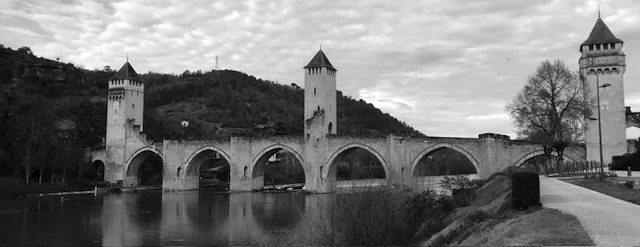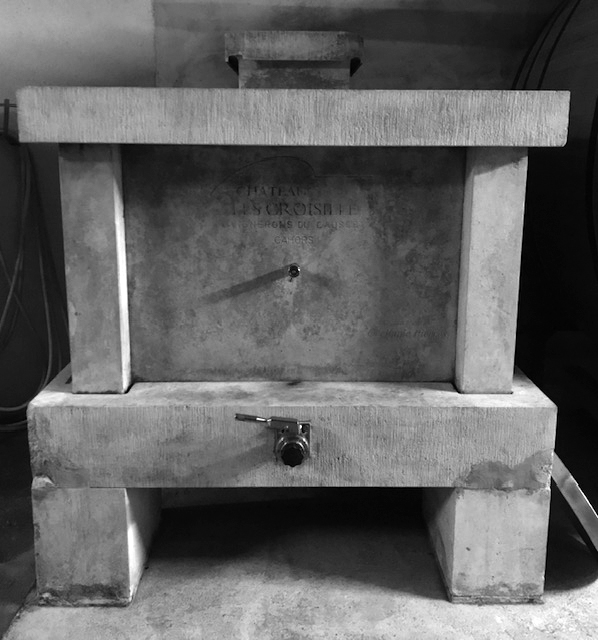
HISTORY AND BACKGROUND
For centuries, Cahors has been famed for its black wine from which a reputation has developed of a wine that is sturdy, tannic and long-lasting. Made almost exclusively from Malbec (known locally as either Côt or Auxerrois), the variety is believed to have been planted in the Quercy for some 2,000 years. Modern-day Cahors, however, is much more accessible and continues to remain one of the finest wines produced in the south west.
Cahors can also claim to be the most dynamic region too, as it gains momentum from its own ‘New Wave’ generation of thirty-something vignerons set on creating their own identity.
The marriage of Henry II of England to Eleanor of Aquitaine in 1152 not only opened the way to the development of the vineyards of Bordeaux but also to those of the Haut-Pays, which depended upon the river systems of the Garonne and the Dordogne to transport their wines to market. From the Middle Ages, the wines of Cahors were deemed to travel well and were even considered to improve during the journey. Records show that Cahors was sold in London as early as 1225.
Throughout the Middle Ages, however, a struggle waged against the Bordelais, with their privileged geographical position. The events of the Hundred Years War saw the city of Cahors side-lined having resisted Edward III who, in retaliation, forbade the wines of Cahors to enter the port of Bordeaux until after Christmas, thus missing the vital trading period. This ban existed from 1373 until the Bordelais privileges were finally abolished under Louis XVI in 1776.
By the eighteenth century, the fame of Cahors had spread to Russia, and Peter the Great is said to have drunk Cahors for his stomach ulcer. The wines were also administered by Russian orthodox priests for communion.
Cahors was designated one of the first VDQS regions in 1951. Unfortunately, the vineyards were depleted by the severe frost of 1956 and it was not until the 1960’s that any revival was seen. The real impetus came with the recognition as an appellation in 1971 and, since then, the area has undergone enormous revitalisation.
There are forty-five villages in the appellation. Most are located in the Lot Valley which stretches some 40 kilometres to the west of the town. Some villages, such as Luzech, once were river ports in their own right. Since the granting of the appellation, the vineyards have grown considerably from just 200 hectares at the beginning of the 1960s to over 4,000 hectares today.
Geographically located equidistant between the Atlantic Ocean, the Mediterranean and the Pyrenees, the climate tends to be dictated by the prevailing conditions of any given year. For example, one would consider the cooler influence of the 2014 vintage to be more western-maritime, whilst the warmer climate of 2015 had a clear Mediterranean effect on the wines. Regardless, of geographic, climatic and historical influences, Cahors clearly doffs its cap more often towards the style of Bordeaux.
The great debate of Cahors, however, is over the soil. The appellation includes sites where vines flourished before phylloxera and covers a variety of different terrains, which inevitably give varying profiles to the style of wine produced. The debate centres on the merits or disadvantages of the valley slopes, or coteaux, as opposed to the causses, the arid plateaux above the valley where there is more limestone and minimal topsoil.
The altitude on the plateau ranges from 250 to 350 metres, which also influences the resulting wines. It is generally accepted that the wines from the causses are sturdier and longer-lasting, whilst the wines from the valley slopes are fuller and softer with less astringency. After phylloxera and the difficult years of the mid-20th Century, the slopes were generally abandoned, since they were considered too steep and difficult to work.
The dominant soil of Cahors is clay and chalk, with some decomposed rocks for which the local name is castines. In some random places, there is a high iron content, giving a deeper red colour, while in other spots the soil is white and chalky. The river banks are alluvial, so no vines are grown here as the land is too fertile. Elsewhere, there is flint mixed with clay.
Cahors remains exclusively red. No white or pink wine is included in the appellation.

CHÂTEAU LES CROISILLE – Vignerons du Causse…
Brothers Germain and Simon Croisille are very much at the front of the ‘wave’ in the appellation, having taken over from their parents within the last few years. It was not always the case for this second-generation wine-growing family who have built their domaine ‘from the ground, up’.
Bernard and Cécile moved to the hamlet of Fages, close to Luzech, in 1979. Starting as tenant farmers on uncultivated land, it took them until 1984 before they were able to deliver a crop from their newly established seven hectares of vines to the co-operative cellar in Parnac. A decade later, they elected to break away from the co-op system altogether and started a relationship with a local grower instead and began to vinify their own wines. Germain joined the business and was joined by his younger brother in 2015.

Also in the late 2000s, the family had the opportunity to acquire and restore a run-down Quercynoise style house with its own viticultural estate. They built a chai to accommodate their own crop and also extended their vineyard holding with a further 10 hectares of rented vines, located in the Luzech valley. After a period of 20 years, the family Croisille are now finally self-sufficient, controlling a total of 30 hectares across the slopes and plateaux of the region.
The vineyards have been worked organically since 2010 and have been fully certified since 2013 and are mostly harvested by hand.
The Wines
Le Croizillon is from younger vines harvested earlier and sourced from several sites on the second terraces and plateau of Luzech. The grapes are harvested using a combination of machine and hand. Part-vinified (unlawfully, since the appellation states that the grapes need to be de-stemmed before fermentation) using a short carbonic maceration with the resulting wine aged for six months in concrete and stainless-steel tanks before bottling.
Silice is all from hand-harvested grapes grown on a rare combination of silica-rich red clay and iron soils on the Luzech plateau. Only around 5% of the appellation enjoys such a soil profile. The vines here are around 30 years old. Destemmed, the resulting wine aged in a combination of older barriques and concrete tanks for 18 months before bottling.
Calcaire as the name suggests, the 35-year-old vines are grown on limestone rich Kimmeridgean-marl soils on the plateau. Grown at between 250 and 300 metres altitude, these hand-harvested grapes are aged in older oak for two years before bottling.

La Pierre – This cuvee comes from a parcel of 40 year-old vines grown at an altitude of 300 metres of the Luzech plateau on a bed of Siderolithic limestone. To emphasis this further, the wine is aged using an unprecedented technique: raised in a hand-carved 10-hectolitre vat of limestone, sourced in the Lot valley. This unusual vessel resembles a mausoleum rather than a storage vessel for wine.
CocoriCot is a play on words. It is an equal blend of Malbec and Merlot. Since the appellation only allows for a maximum of 30% Merlot in the blend, the wine is declassified to IGP Côte de Lot status. The wine is vinified using a ten day carbonic maceration before ageing for 8 months in concrete vats and is a ‘no added sulphur’ wine. The 2022 is the third vintage produced.
La Petite Bergerie is a second label project, produced for the Auvergnat wholesaler, Desprat and comes from younger vines.
www.lescroisille.com
| Le Croizillon | Pack shot | Fiche | |
| Silice | Pack shot | Fiche | |
| Calcaire | Pack shot | Fiche | |
| La Pierre | Pack shot | Fiche | |
| CocoriCot | Pack shot | Fiche | |